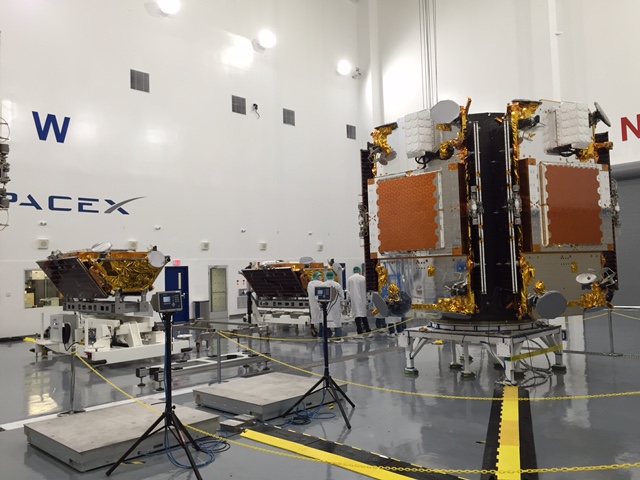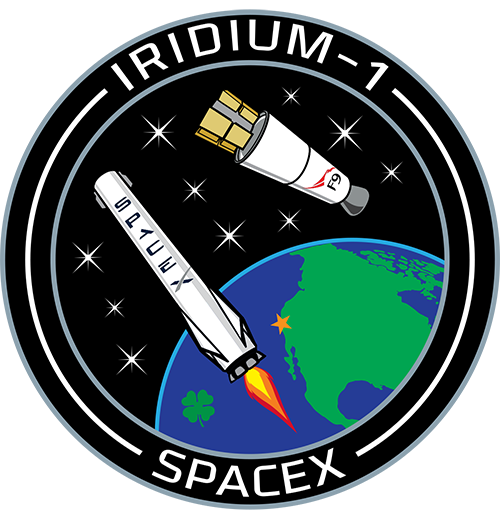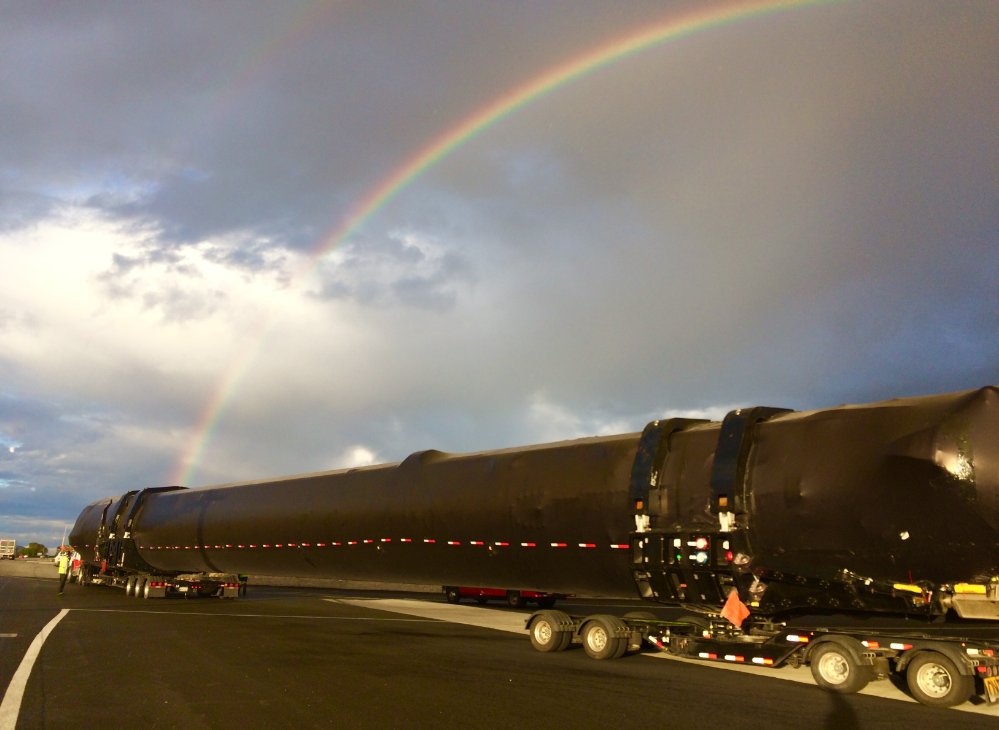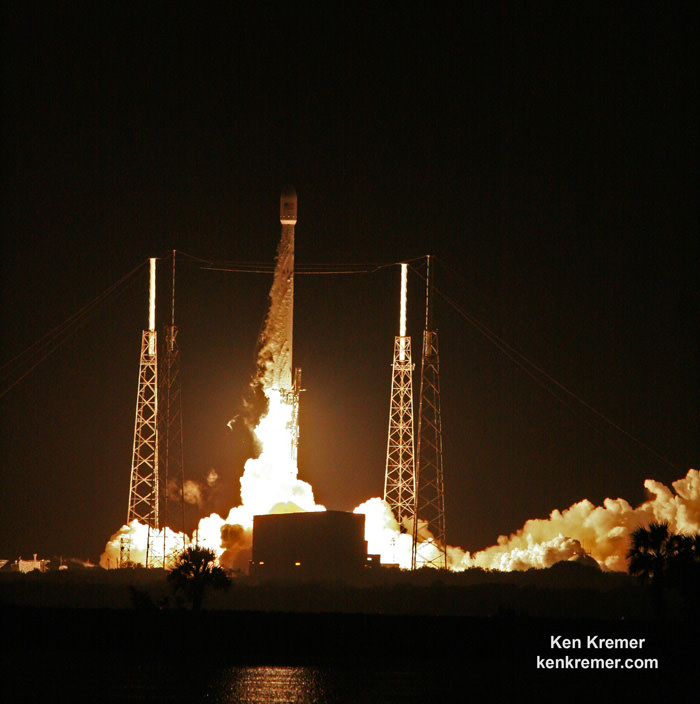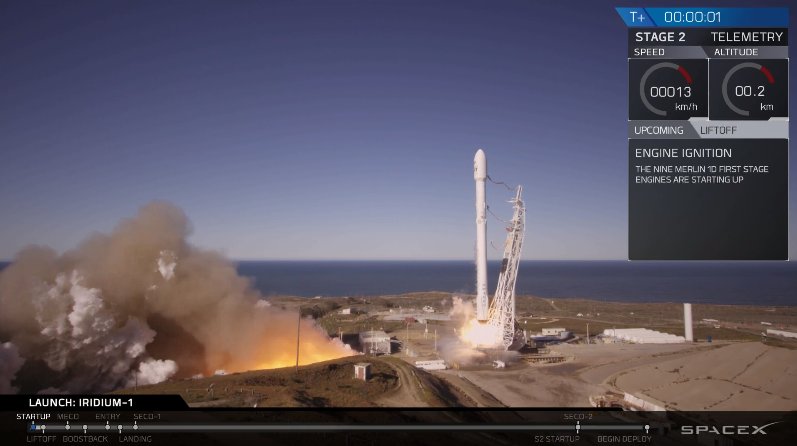
With Billions and Billions of dollars at stake and their reputation riding on the line, SpaceX came roaring back to life by dramatically executing a picture perfect Falcon 9 rocket launch this morning (Jan. 14) that successfully delivered a fleet of ten advanced Iridium NEXT mobile voice and data relay satellites to orbit while simultaneously recovering the first stage on a ship at sea off the west coast of California.
BREAKING NEWS – check back for updates.
The primary goal of SpaceX’s Falcon 9 launch from Space Launch Complex 4E on Vandenberg Air Force Base in California was to deploy the payload of the first ten Iridium Next communication satellites to low Earth orbit on the Iridium-1 mission.
“Thanks @elonmusk – a perfect flight! Loved watching sats deploy with you in the control room,” tweeted Matt Desch, Iridium Communications CEO, soon after receiving full confirmation that all 10 Iridium NEXT satellites were successfully deployed from their second stage satellite dispensers.
“More to go, but now to celebrate!!”
The inaugural ten will serve as the vanguard of a fleet that will eventually comprise 81 satellites.
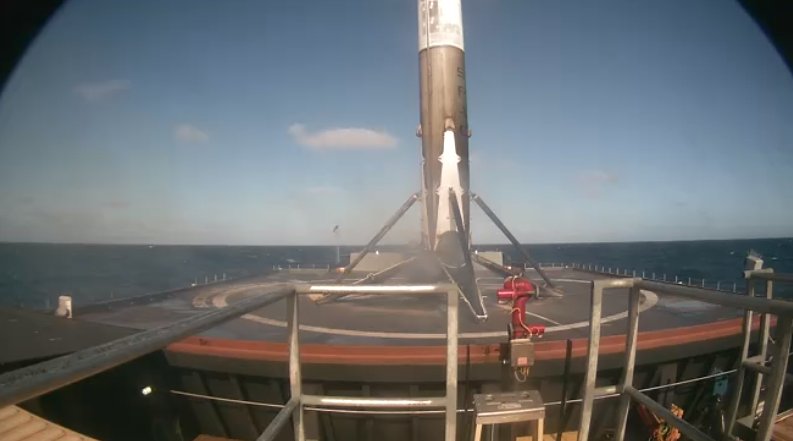
Today’s successful blastoff took place barely four and a half months after another Falcon 9 and its $200 million Israeli commercial payload were suddenly destroyed during a prelaunch fueling test on the Florida Space Coast on Sept. 1, 2016.
Another launch failure would have dealt a devastating blow to confidence in SpaceX’s hard won reputation.
The Sept. 1, 2016 calamity was the second Falcon 9 failure within 15 months time. Both occurred inside the second stage and called into question the rockets reliability.
The 229-foot (70-meter) Falcon 9 rocket was rolled out from its processing hangar to the launch pad and raised vertically yesterday.
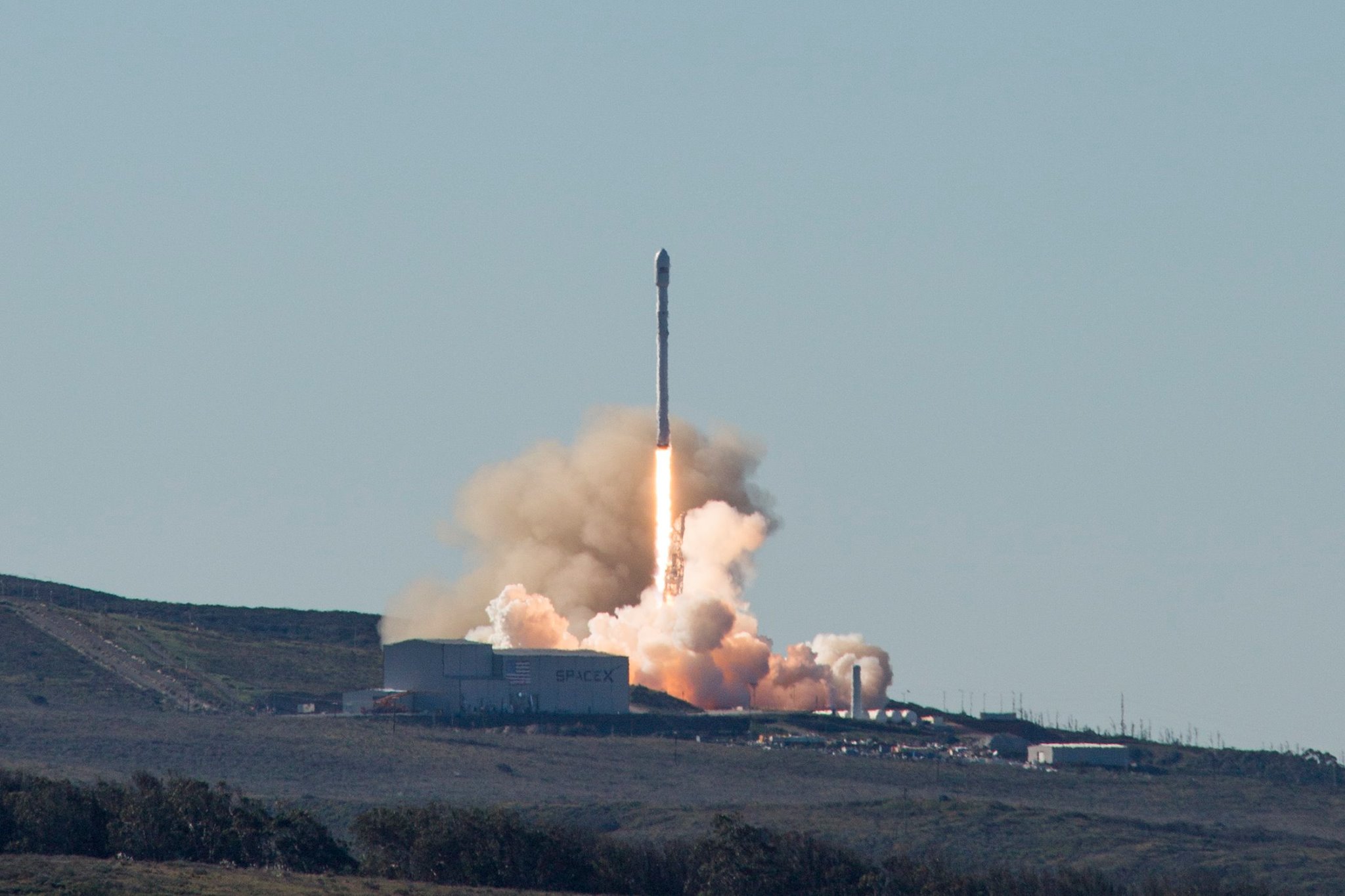
Today’s entire land, landing and satellite deployment event was shown live on a SpaceX hosted webcast. It offered extremely sharp views of Saturdays on time liftoff at 9:54:34 a.m. PST or 12:54:34 p.m. EST, and unbelievably clear images of the first stage descending back to Earth towards a tiny drone ship.
“Overall a wonderfully nominal mission,” gushed the SpaceX commentator during the webcast.
Since the Iridium 1 mission only had an instantaneous launch opportunity precisely at 9:54:34 a.m. PST or 12:54:34 p.m. EST, there was no margin for any technical or weather delays. And none happened. Although an errant boat had to be quickly escorted out of the exclusion zone less than 20 minutes before blastoff.
Confirmation of a successful deployment of all 10 Iridium NEXT satellites came at about T plus 1 hour and 17 minutes after liftoff from Vandenberg.
“So, so excited – finally breathing again!” tweeted Desch.
“Thanks for all the great vibes – I felt it! All 10 sats deployed; good orbit; good telemetry! WOW.”
The mobile relay satellites were delivered into a circular orbit at an altitude of 625 kilometers (388 miles) above Earth.
They were released one at a time from a pair of specially designed satellite dispensers at approximately 100 second intervals.
“It was a clean sweep, 10 for 10,” said SpaceX commentator John Insprucker during the live webcast.
“All the bridge wires show open, and that is a conclusion of the primary mission today, a great one for the first stage, second stage, and the customer’s satellites deployed into a good orbit.”
The Iridium NEXT satellites were built by Thales Alenia and Orbital ATK.
In the final moments before the propulsive landing, you could read the lettering on the “Just Read the Instructions” drone ship as the engine was firing to slow the descent and the landing legs deployed.
Really there was no cutout or loss of signal the whole way down. So the world could watch every key moment as it happened in real time.
The first stage softly landed approx. 8 minutes and 18 seconds after the California liftoff.
“First stage has landed on Just Read the Instructions,” SpaceX tweeted post landing.
This was the first launch by SpaceX since last August from the Florida Space Coast, and it came off without a hitch.
Iridium 1 is the first of seven planned Falcon 9 launches to establish the Iridium NEXT constellation which will eventually consist of 81 advanced satellites.
At least 70 will be launched by SpaceX.
The inaugural launch of the advanced Iridium NEXT satellites will start the process of replacing an aging Iridium fleet in orbit for nearly two decades.
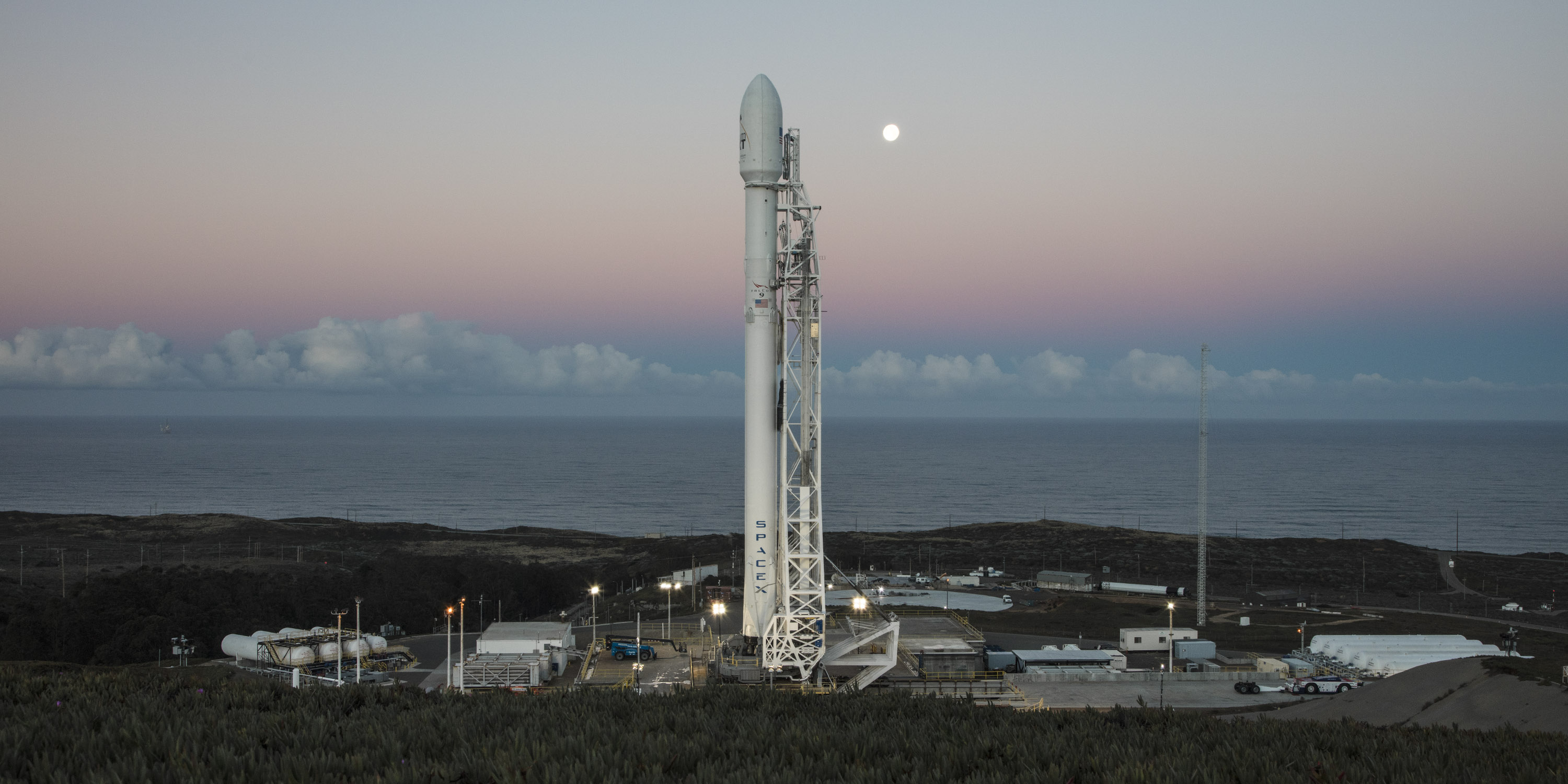
This Falcon 9 was been outfitted with four landing lags and grid fins for a controlled landing on the tiny barge prepositioned in the Pacific Ocean several hundred miles off the west coast of California.
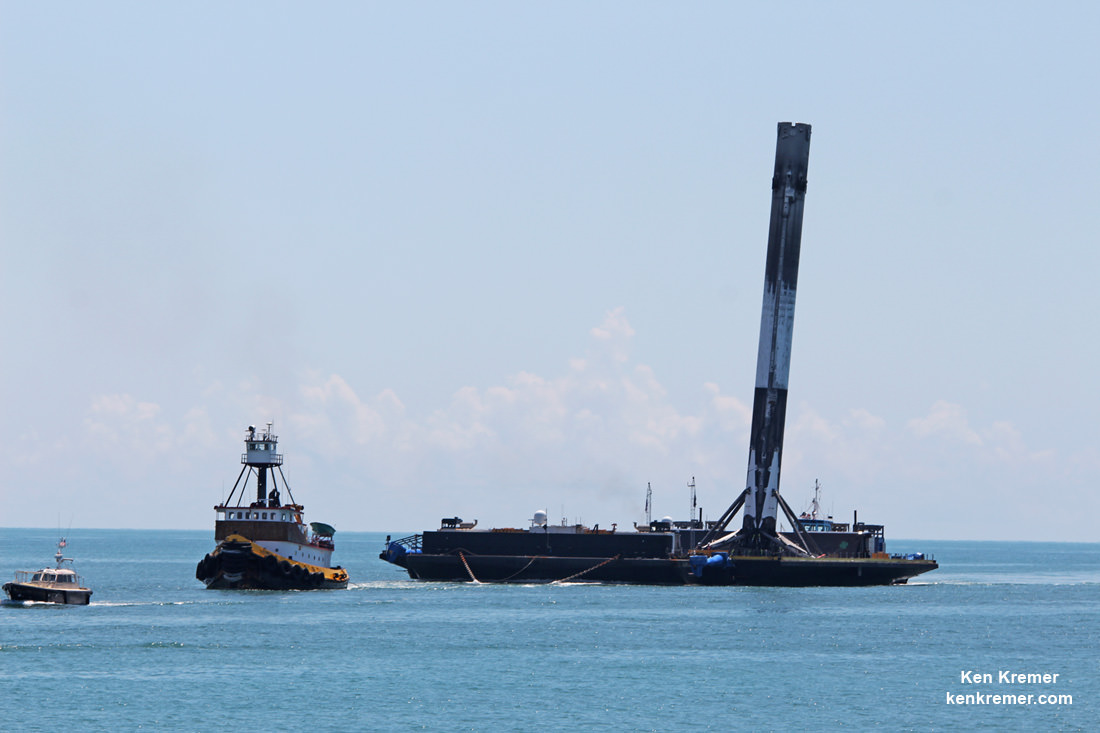
Watch this space for continuing updates on SpaceX.
Stay tuned here for Ken’s continuing Earth and Planetary science and human spaceflight news.
